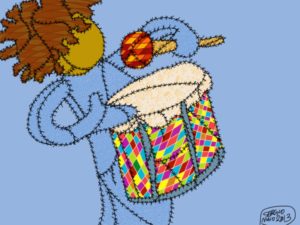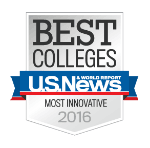CITME director, Evan Tobias recently joined Paul Allison and Christina Cantrill from the National Writing Project on EdTechTalk’s Teachers Teaching Teachers to discuss issues around music education, connected learning, and the Sound Explorations project for the 6th Digital Media and Learning Competition. Paul and Allison are fellow grant awardees for the NWP’s Sandboxes for Learning project so the conversation addressed some of the opportunities and challenges around designing Connected Learning Playlists. Evan also shared some of the Sound Exploration team’s approaches to designing the music learning playlists along with some draft “learning experiences” (XPs) to explain design decisions. Check out the conversation below:
connected learning
Arizona State Music Education Initiative to Develop Music Connected Learning Playlists
Sound Explorations: Developing Connected Music Learning Playlists
The Sound Explorations project, led by the Consortium for Innovation and Transformation in Music Education at Arizona State University, is in the process of developing six connected music learning playlists organized around the following themes:
- Building instruments and interfaces:
- Coding and programming music
- Connecting music and culture
- Jamming: Solo and Groups
- Making beats
- Producing original music
Sound Explorations: Creating, Expressing, and Improving Communities, the full title of our project, gives a sense of the types of engagement we will encourage. Each playlist’s multiple pathways will guide youth along experiences addressing national Core Arts Standards artistic practices of creating, performing, responding, and connecting through interest-based musical practices. Learning experiences will emphasize creativity and self-expression, encouraging youth to consider and act upon how music can improve people’s lives.
The goal of the playlist set is to provide rich musical contexts that connect formal (i.e. middle and high school music programs) non-formal (i.e. community or after-school music programs), and informal (i.e. homes or libraries) settings.
Playlists will foster musical inquiry and creativity, deepen musical skills and understandings, and strengthen participants’ sense of selves as musical people who make a difference in their communities and society.
So far we’ve identified several design challenges and opportunities that we are thinking through as we continue our work. Some examples include:
- How might we design and facilitate learning experiences with an ethic of inquiry and project-based learning in a playlist format?
- How might we support opportunities for rich, playful, and satisfying musical engagement through the learning experiences even if the learner has limited access to resources?
- What type of structures make the most sense for learners to navigate and engage with learning experiences (XPs) that are organized in varied ways that enable multiple pathways within the same playlist?
We are collaborating with partners such as NYU’s MusEdLab, Today’s Future Sound, and Rosie’s House: A Music Academy for Children, consultants with content expertise, pre-service and in-service music educators, teaching artists, community youth organizations, and youth to help us answer these and other questions that emerge.
I’ll provide an update to some of these issues in the next post.
In the meantime, feel fee to participate in the development of our music learning playlists through our crowdsourcing initiative with the following form (and share widely):
Connected Learning at The Center
During Fall 2016 CITME will partner with the ASU Music Education Department, ASU School of Community Resources and Development, and Phoenix Center for the Arts to launch a number of music programs ranging from coached chamber groups to digital music creation labs.

Under the leadership of Dr. Roger Mantie, HIDA at the Center will support creative musical engagement, music teaching and learning, community engagement, and leisure to impact downtown Phoenix positively.
This initiative is supported by a Herberger Institute for Design and the Arts Research Council grant.
CITME will help connect learning across school and community contexts and link pre-service music educators with the program through community leadership, service learning, and socially engaged practice initiatives.
We look forward to launching this program this coming Fall!
AZ Beat Lab in the Community
CITME partner and ASU Music Education Masters student Samuel Pena has been hard at work developing the AZ Beat Lab. Over the past school year Samuel and the AZ Beat Lab have provided programming to the Music Instrument Museum, Mesa SparkFest, and Art Detour at Palabras Libreria. The Beat Lab facilitates beat making with technology such as launchpads, laptops, iPads, and even the Makey Makey! Samuel applies pedagogy, curriculum design, program development, and community engagement developed over several ASU Music Education courses and initiatives with his rich experience with community music making and facilitation to engage people in musical experiences and learning.
 CITME is proud to partner with AZ Beat Lab and looks forward to the organization growing over time and future collaborations in schools, after-school programs, and community events.
CITME is proud to partner with AZ Beat Lab and looks forward to the organization growing over time and future collaborations in schools, after-school programs, and community events.

